This review will provide a thorough evaluation of the Teachable online course platform, from the perspective of an experienced course creator. It will cover the course creation tools, email marketing features, course creation process, and student experience, in order to assist you in determining if it is a suitable platform for your needs.
You are currently evaluating Teachable as a potential platform for your online courses, but you have some uncertainty regarding its suitability.
Teachable is an online course platform that offers many features and is popular among users. However, it may not be suitable for everyone due to the presence of other options.
Our Teachable review provides a comprehensive analysis of the platform, including insights on creating and selling online courses and our own experience using it, to aid in your decision-making process.
Additionally, we will conduct a comparison of the platform with its prominent competitors.
Let’s get started.
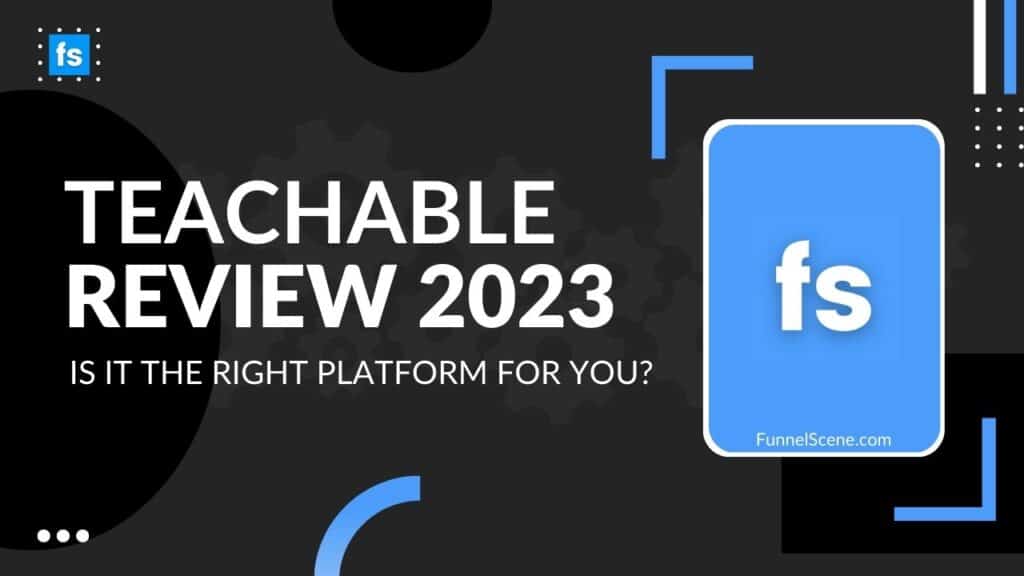
Teachable Review Summary
Before analyzing the platform’s features in detail, let me provide a brief overview of the review.
Teachable is an online platform that offers tools for creating and selling courses, including features such as course creation, video and audio file uploading, and a straightforward checkout process.
The process of starting and publishing a course is efficient and straightforward.
The Pro Plan and above do not have additional transaction fees, while lower-tier plans charge transaction fees ranging from 5% to 10%.
The platform offers both free and paid plans (Free, Basic, and Pro) with a low monthly cost.
Teachable offers the option to create a free school website or integrate it with an existing website.
The Teachable platform allows for easy course design and customization of appearance for students, regardless of the chosen option.
Teachable offers drag-and-drop functionality, allowing users to easily customize their course design without requiring any design expertise.
Teachable provides hosting, payment processing, and student communication for your course, allowing you to concentrate solely on course creation.
Overall Rating
These are the platform’s overall ratings.
Ease of Use: 5 stars
Course Creation and engagement: 4.5 stars
Site Design & Customization: 5 stars
Sales & Marketing: 4.5 stars
Customer Support: 4 stars
Pricing: 4 Stars
Let’s review the advantages and disadvantages that can be taught.
Teachable Pros
The Teachable platform has several significant advantages.
- Teachable offers a comprehensive platform that allows you to create, promote, and sell your online course without the need for multiple tools, all from one dashboard.
- Teachable offers a free version that provides unlimited students, which is a feature not commonly found in other online course creation platforms.
- The platform has a dedicated fraud team to ensure secure business operations.
- The platform includes an email marketing feature that allows for direct communication with students, eliminating the need for a separate email tool.
- Teachable offers a variety of marketing options, including coupon codes, affiliate marketing, email marketing, and other tools to promote your courses to your intended audience.
Cons
- Teachable’s support options are limited to email and chat, which may not be preferred by all users due to the absence of phone support.
- The payout options available on the platform may not be suitable for users located outside the US.
- The platform has limited support for commonly used languages.
What is Teachable?
Teachable is a platform that provides an all-inclusive solution for influencers and creators to expand their business by developing and marketing courses. It streamlines the process of creating and selling courses in a single location, enhancing convenience and security.
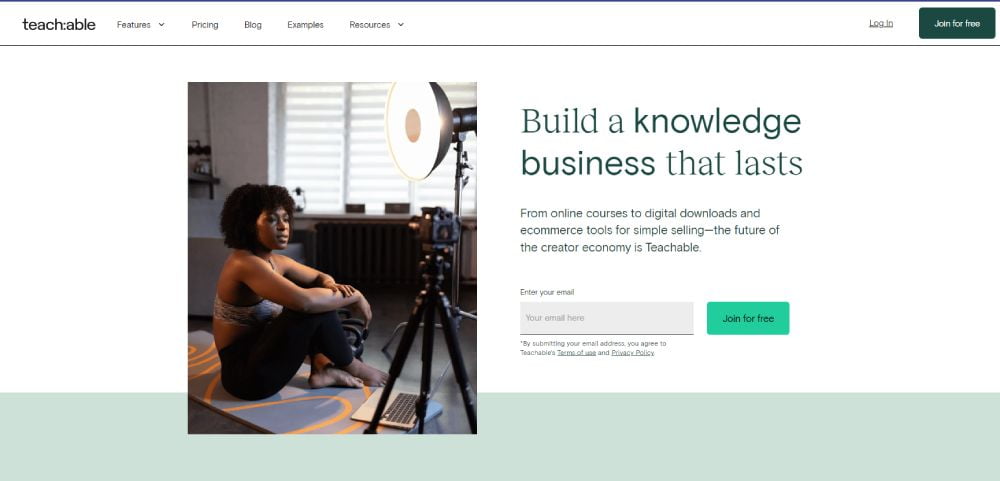
Teachable provides a comprehensive platform for creating courses, managing web hosting, and processing payments, allowing users to prioritize their creative work over technical tasks.
Utilizing this platform enables the creation of an entire business, streamlining tasks and reducing complications. This in turn allows for increased focus on the creative aspect of the business and the development of further courses.
Teachable is a platform that enables individuals to create and manage a profitable course business, regardless of their level of expertise. The platform provides step-by-step guidance throughout the process.
Teachable offers solutions for the technical aspect of your business, allowing you to prioritize your passions.
Teachable Company Overview
Teachable is a company based in New York City that was founded in 2014 by Ankur Nagpal, who was recognized as one of Forbes’ 30 Under 30 in 2016 and won the Gold Stevie Award for Young Entrepreneur of the Year that same year.
The platform has a global user base spanning over 150 countries, and offers courses in over 80 languages covering a diverse range of topics including business, marketing, health, fitness, photography, and technology.
Teachable has been assisting creators in transforming their passion into a business since 2014. With over $1 billion in sales earned by creators to date, they continue to enhance their services with new features and integrations.
Teachable is a prominent online course platform that boasts a network of over 100,000 course creators, more than 30 million students, and 13 million courses.
Teachable Course Creation Features
Teachable offers a user-friendly course creation platform that includes a drag and drop editor and the ability to upload material from external sources, such as Google Drive. The platform enables users to easily develop online courses that are visually appealing and have a professional feel for students.
Teachable offers various engagement tools, including quizzes and assignments.
The platform provides a user-friendly interface resembling a Word document, facilitating website creation for those unfamiliar with HTML.
Additionally, there are numerous pre-made templates accessible for users who prefer to construct their site from an established framework.
The dashboard provided by them assists instructors in monitoring the progress of their students.
This section will provide an overview of the course creation process, allowing you to assess the platform’s suitability for your requirements.
Content Uploading & Structuring
To create a course on Teachable, one must provide basic information such as a course name and description, an introduction video, a summary, and other necessary details. The process is straightforward.
To create a course on Teachable, the steps include signing up, establishing your school and uploading your content, organizing your course, and fostering interaction with your students.
Create an Account on Teachable
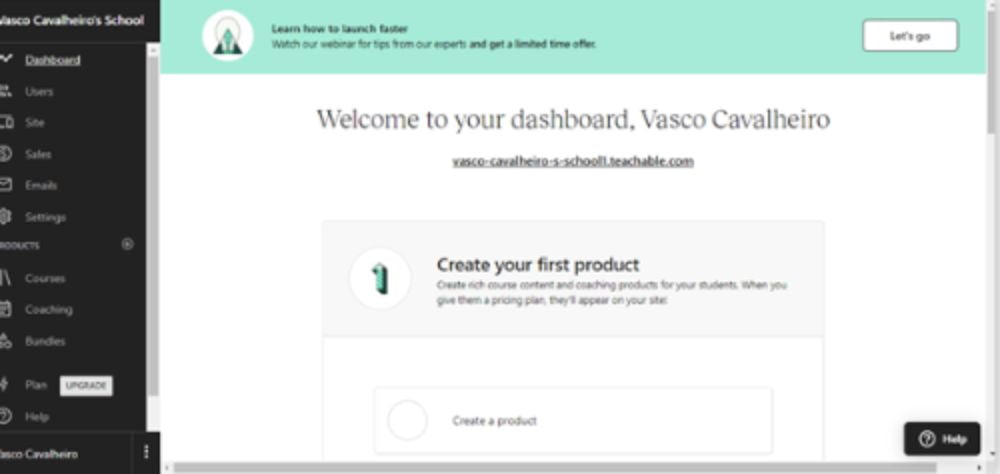
Creating a Teachable Course From Scratch
To make a course, select “create a product.” This leads to a new page where you can choose to create a course or coaching. To start your course, click “Create Course” in the top-right corner. This takes you to the course builder tool where you can add content like videos and presentations.
Our platform provides a variety of tools to enhance your students’ learning experience, such as video and document uploads, quizzes, surveys, drip schedules, lessons with text, images and links, and more.
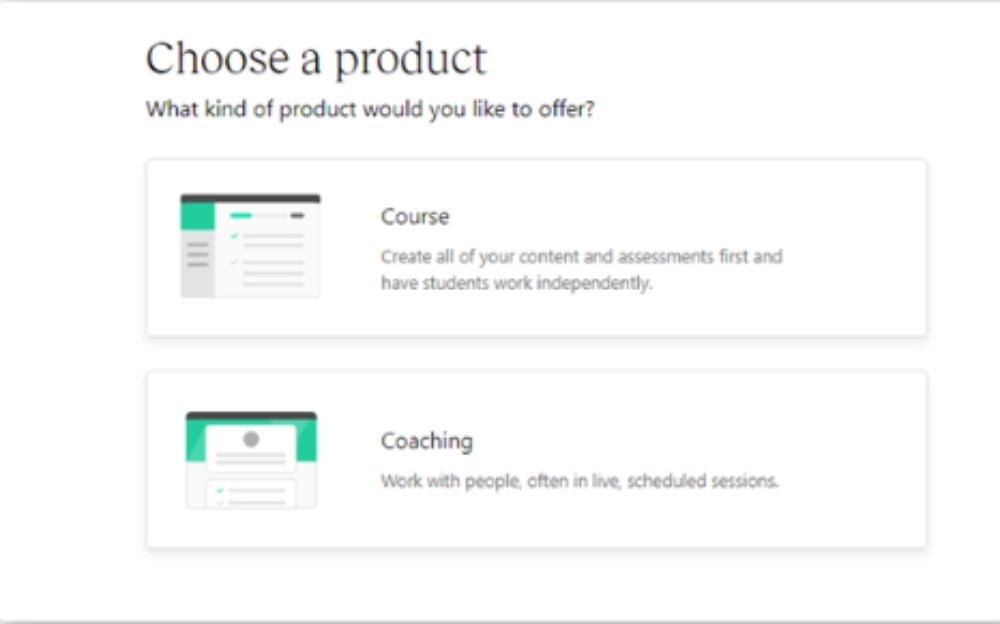
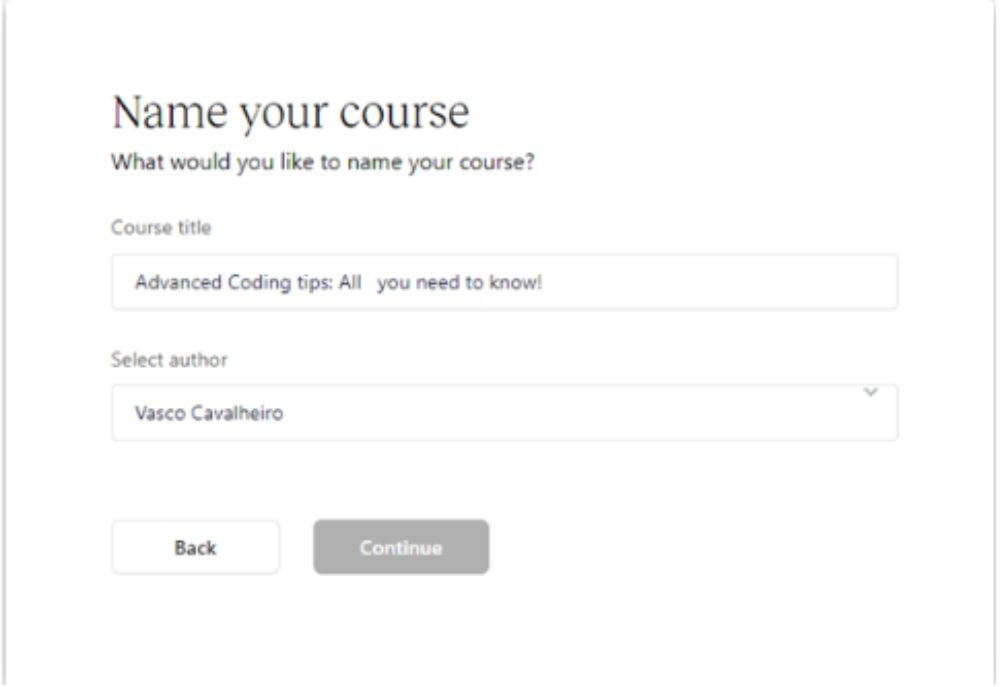
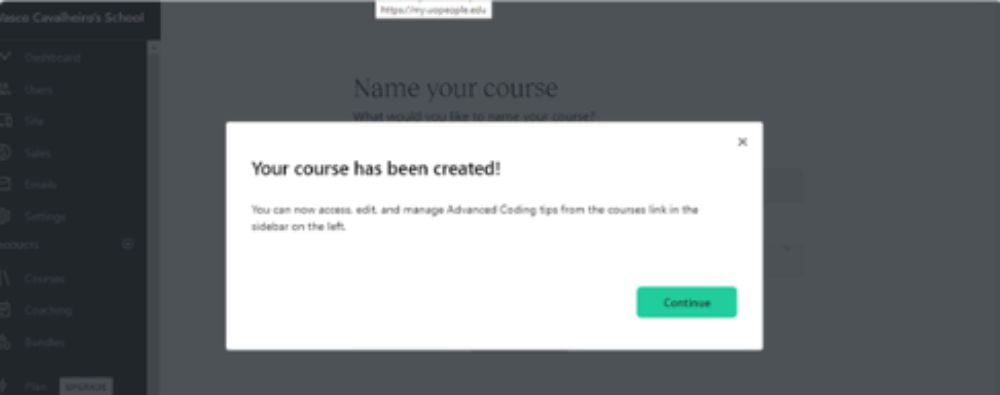
To add lessons to your course, simply click “Add Lesson” from the course page after creating it.
To input the details for a chosen lesson type (video, audio, text, or file), simply select the lesson type and click “Save.”
To complete your course, add more lessons. A lecture can have one or more lessons, such as text, audio, video, or images. You can upload media files to Teachable or embed them from third-party providers like YouTube, Vimeo, Dropbox, and Google Drive. To add code snippets to a lesson, click Add Code Snippet in the lesson editor sidebar.
Publish Your Teachable Course
To publish your course, navigate to the Settings tab, then click on Account & Billing and select Course Details. Here, you can add any necessary information about the course and once complete, click ‘Publish Your Course’ to make it available on your school’s website.
There are multiple options available for creating your course, including building it from the ground up, importing content from a CSV file or Dropbox folder, or converting finished lectures into a Teachable course.
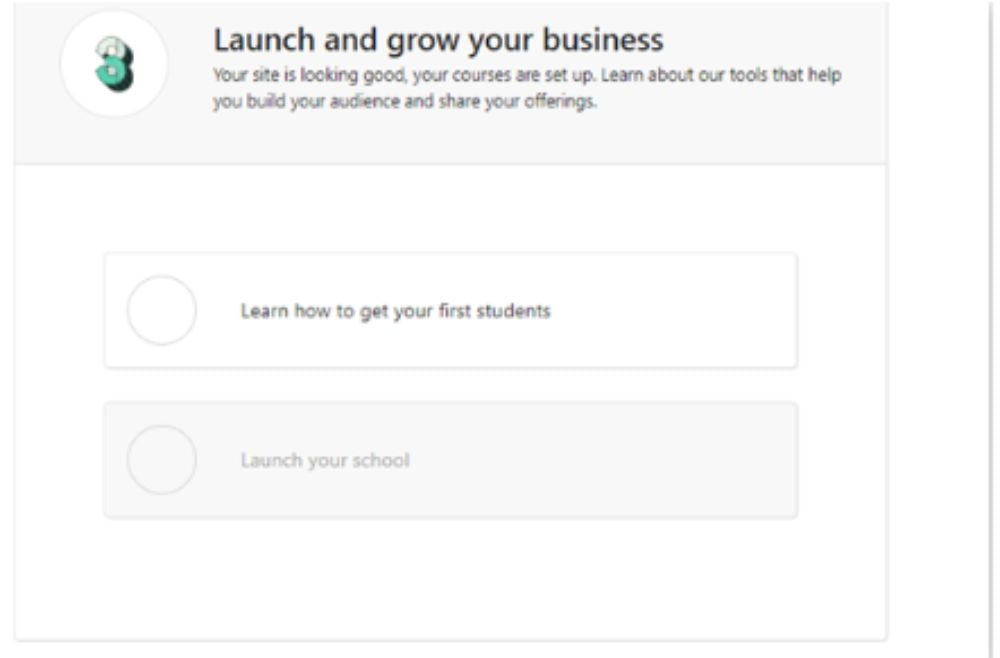
Course Creation Features - The Bottom Line
Website Design & Customization Features
The Course Builder
Teachable is an online platform that offers users the ability to easily create and sell courses. The process of creating a course is quick and straightforward, and users can customize their website with just a few clicks. Teachable aims to provide users with a high-quality experience.
Several course builder features are available.
Drag and Drop Editor
The online course builder features a drag and drop editor that simplifies the process of creating course content. Users can easily add lectures, quizzes, and other sections to their course outline and customize these elements using the rich text editor. Additionally, the editor offers tools for embedding various types of media files, such as videos and images.
Course Design Templates
Teachable provides course creators with various design templates to enhance the visual appeal of their online courses. The customizable templates offer an easy and efficient way to create visually stunning courses in a matter of minutes.
Using templates can be easy, but they also have limitations. Themes, however, can be altered to match any brand or course topic. A good theme not only changes the look of your page, but is also responsive and looks great on all devices. Additionally, themes offer a variety of color schemes that can be customized to match your branding.
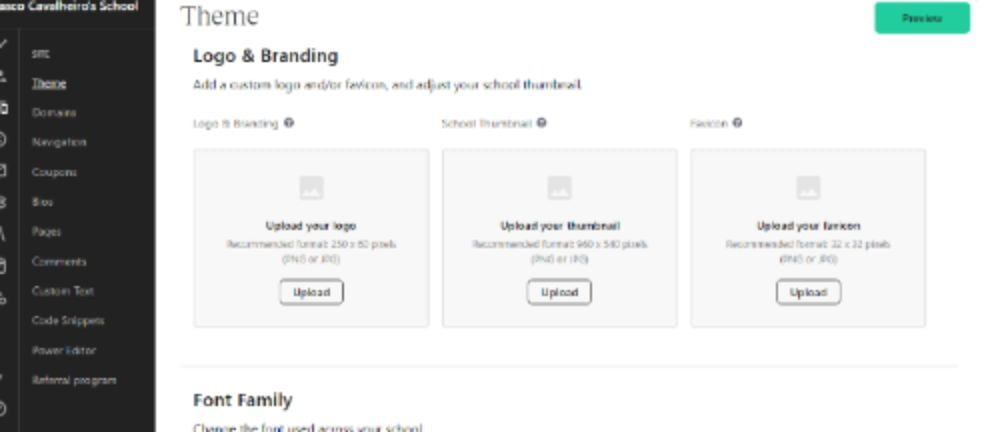
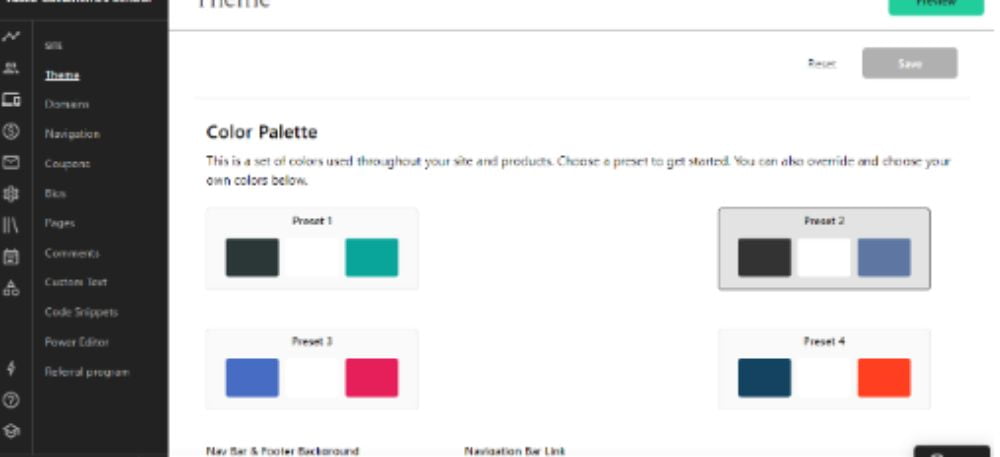
Custom Domain
Hosting your course on a custom domain, such as mycourse.com, instead of a subdomain like mycourse.teachable.com, can improve website memorability and increase brand trust among potential students.
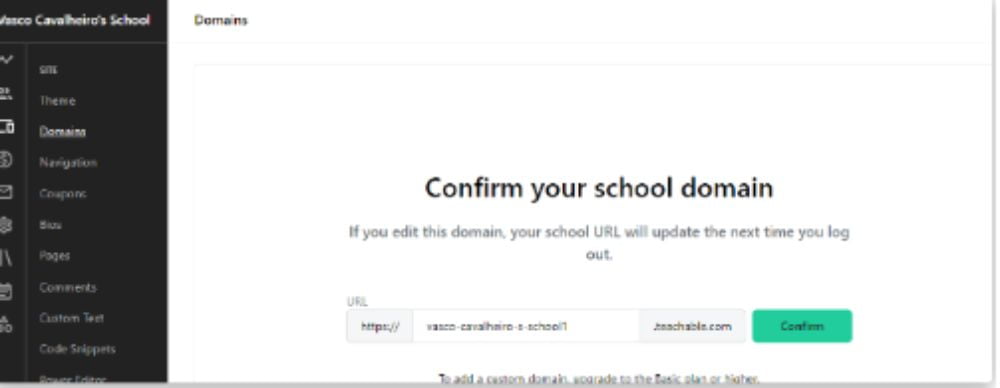
You have the option to create a subdomain, such as courses.myschool.com, but it is recommended to always choose a custom domain.
To add a custom domain to your school website, go to the School Settings page in your admin area and an SSL certificate will be automatically provided.
After configuring the CNAME records provided by Teachable in your DNS settings, your school will be accessible on your custom domain.
Customize Each Lesson
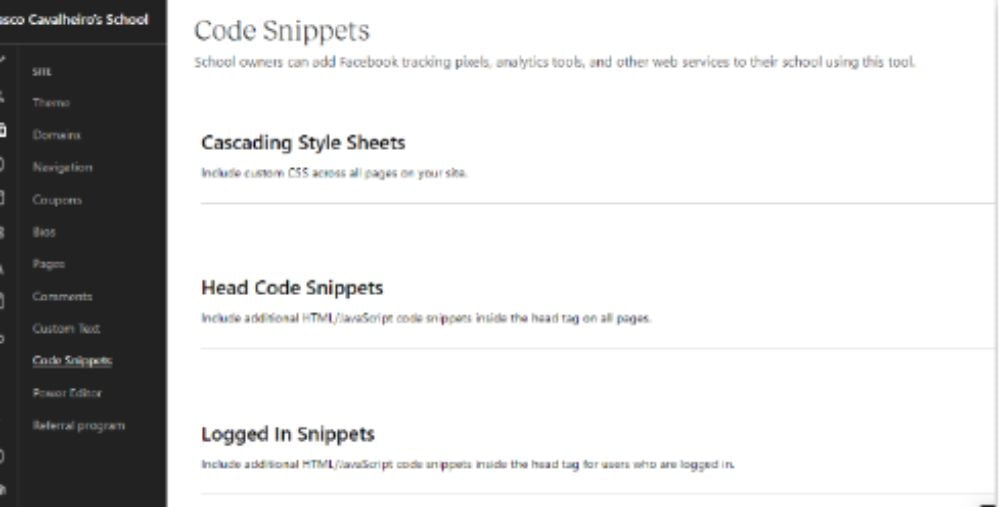
The appearance and design of each lesson can be personalized with custom headings, text formatting, background colors, images, and videos.
Additionally, multimedia elements such as downloadable PDFs, audio files, videos, and more can be inserted into each lesson.
The platform allows for customization options such as logo uploading, CSS customization, HTML editing, font selection, JavaScript integration, and even creating a new theme from scratch.
Assignments can reinforce learning and track student progress. They can include text instructions, test questions, file uploads, and more. Bonus content can also be offered through Teachable by adding downloadable PDFs, audio files, and other files to individual lessons or entire courses at once. Teachable CSS snippets allow instructors to customize the appearance of their school and course pages to match their brand and style.
Teachable’s CSS editor is a tool that enables customization of the appearance of your school, course, and pages. The CSS Snippets section is located in the Site Appearance tab of the Account Settings.
The CSS editor can be utilized to modify the color, font, and layout of your school. It is accessible through the Design tab in your School Admin area and is available for all Teachable plans.
Users on the Basic plan can utilize a complimentary collection of CSS snippets available in the help center to personalize their school. These snippets cover color and font adjustments, button styles, and the incorporation of custom images. Additionally, all of these pre-made snippets can be accessed through the Design page in the admin area.
Website Creation: The Bottom Line
The Teachable platform provides all necessary tools to create and host a website, with a user-friendly interface for website creation and hosting.
Customizable themes and additional features are available to assist in establishing an online teaching presence.
Teachable offers integration with WordPress, allowing users to construct their website with HTML and CSS or opt for a third-party page builder such as Divi.
Teachable offers the option to create a design using a drag-and-drop course builder or by editing the HTML and CSS of your site. Additionally, you have the ability to publish blog posts directly on your website.
Teachable Course Player & Content Delivery
Teachable has a course player for creating custom courses with videos, audio and text paragraphs, along with PDF downloads for students to access as attachments.The course player is user-friendly and easy to navigate, and it saves your work automatically as you progress through the course, allowing you to track your progress effectively throughout the course’s duration .
There are three display options available – Module, List, and Video – that allow you to customize the appearance of your content.
The course player is designed with multiple delivery options to facilitate student learning.
The Course Player adjusts to screen sizes of various devices and optimizes uploaded video and audio files for optimal student experience.
The course player allows for customization of font size, color, and background to align with personal preferences or brand identity.
Additionally, there are multiple themes available to choose from.
The Course Player offers three types of content: text, video, and audio.
The simple editor allows for the addition of text and images, resulting in the creation of attractive and captivating content with minimal effort.
Student Management Features

Lecture Comments Section
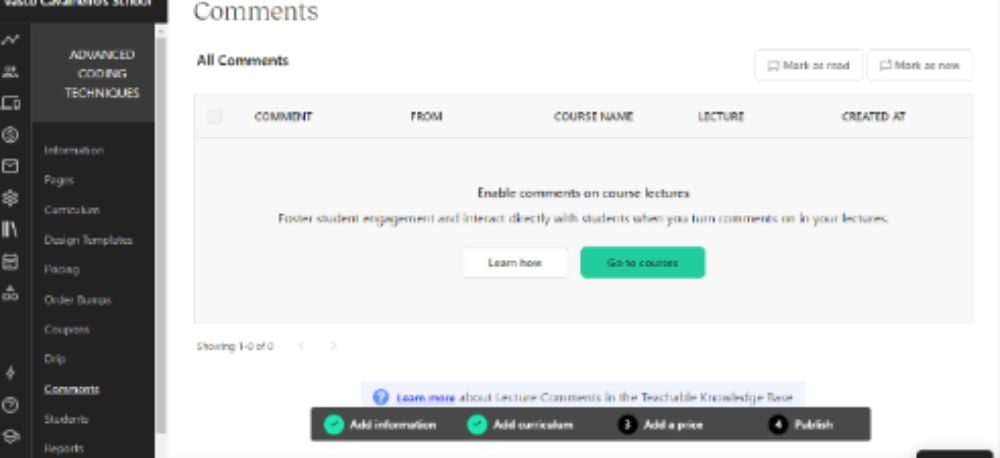
The lecture comments feature on Teachable enables interaction with students and promotes sharing of thoughts.
Lecture comments offer students the opportunity to ask questions and engage in discussions with course creators and fellow students. These comments are visible to all students, facilitating group conversations. Course creators may also choose to make comments private, limiting visibility to the instructor and commenter.
The course platform allows for moderation of conversations related to lectures, with instructor replies being distinguished on the comment threads. This fosters a sense of community among students and enables learning from one another’s experiences.
Teachable Learning and Engagement Tools
Teachable offers various features to facilitate student engagement and diverse teaching methods.
Drip Course Content
Teachable’s drip course content feature allows for scheduled delivery of course materials, rather than releasing all content at once. Updates can be set to inform students of when the next lesson will be available on their dashboard.
Curriculum
The course curriculum can be accessed on the landing page, and you have the flexibility to arrange the material into chapters and add lessons to each chapter.
Lessons may incorporate various materials such as text, video, presentations, projects, handouts, quizzes or surveys, and discussion forums for addressing students’ inquiries.
A typical lecture consists of two sections: video and notes.
During the video, student notes are conveniently displayed on the right side of the screen, allowing for easy reference and instruction following.
Additional course materials, including eBooks, worksheets, PDFs, PowerPoints, text, code snippets, quizzes, assignments, and discussion threads, can be uploaded to enhance your lessons.
Course visibility (Public or Private)
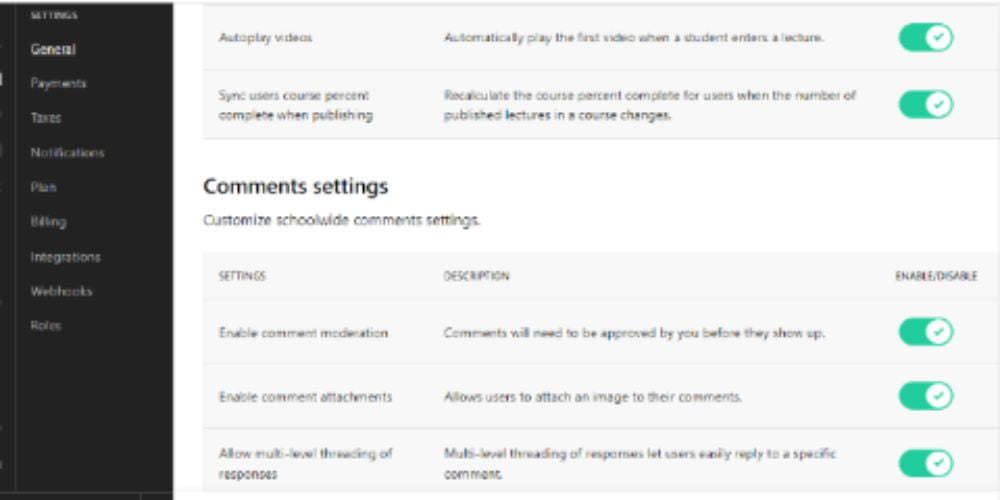
Community Integration
Teachable offers the opportunity to establish an online learning community that enables student interaction and engagement. The platform has introduced a new feature called groups, designed to facilitate the discovery of like-minded individuals with similar interests and objectives.
Teachable offers the ability to create discussion threads and groups for students to connect with each other and engage in active conversation.
Community integration offers a space for individuals to access information they need or inquire about topics of interest.
Basic Quizzes
Quizzes can be designed for courses to assess student knowledge on a particular subject. These quizzes may include single or multiple answer options and may result in a grade or certificate upon completion.
Graded Quizzes
Our platform provides three types of questions: multiple choice, true/false, and fill-in-the-blanks. Additionally, users have the option to include images in their questions and set the number of allowed attempts per question.
Course Completion Certificates
Teachable provides three certificate templates for successful students who complete a course and prefer to receive a certificate.
With Teachable, completion certificates can be automatically generated with the student’s name, course information, and school name. The appearance of these certificates can be customized, including the color and signature, or through the use of HTML.
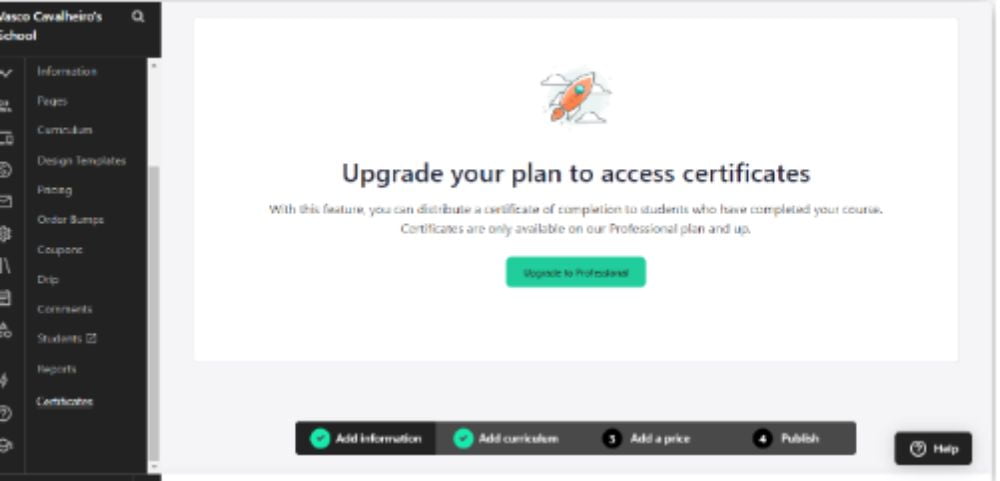
User Roles
Manage user permissions in your Teachable school by assigning specific privileges. This includes granting an assistant the ability to create courses while limiting their access to user management and billing settings.
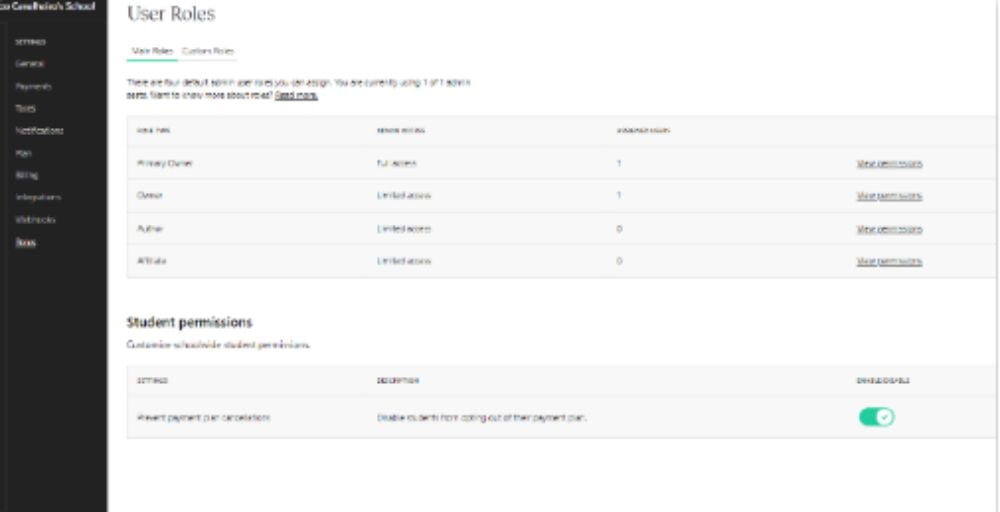
Teachable Student Experience
The Teachable platform offers a straightforward and organized student course experience.
The course player includes a clean and user-friendly layout for easy navigation.
Students have multiple options for accessing their courses, including logging in directly to the website or accessing them through the Student Dashboard.
In order to access the course, students will need to create an account if they haven’t already done so.
If social login options have been enabled, students have the ability to utilize them. After logging in, they will be directed to their dashboard where they can access all of the courses that have been made available to them. Additionally, students can simply select a course from this screen in order to begin.
The course player is the central location for students on Teachable. It serves as the platform for viewing course content, submitting assignments, and taking quizzes. Additionally, students can use the discussion area to ask questions and receive support from their peers and the instructor.
The Teachable course player is accessible on mobile devices, allowing for convenient viewing on smartphones or tablets. Whether commuting or cooking, users can easily watch videos by accessing the app or opening it in their browser.
The lecture includes a navigation window that displays all the course lessons, allowing for easy access to any lesson without having to navigate back to the main course page.
Videos can be watched without auto-play, which prevents the next video from playing automatically after the current one ends. This feature is useful for those who wish to avoid computer audio, or who may be watching videos at work and desire privacy.
Teachable offers an Android and iOS app for mobile viewing. It may be beneficial to consider adding additional features such as offline video streaming (similar to Udemy) and pop quizzes (similar to Thinkific).
Teachable course offers a course player for students. It provides an easy and great experience that’s easy to navigate. All lessons are shown on the left-hand side of the screen. The top left corner has access to the student’s profile, settings, and course dashboard. The top right corner shows the number of completed and remaining lessons.
The lesson opens on the right-hand of your screen, where you can access videos or content. It also tracks your progress, allowing you to pick up where you left off. You can easily revisit interesting lessons using this feature.
The lower right corner displays supplementary details regarding the class, such as student comments in discussions, extra materials, and progress in each lesson.
Teachable Sales & Marketing Features
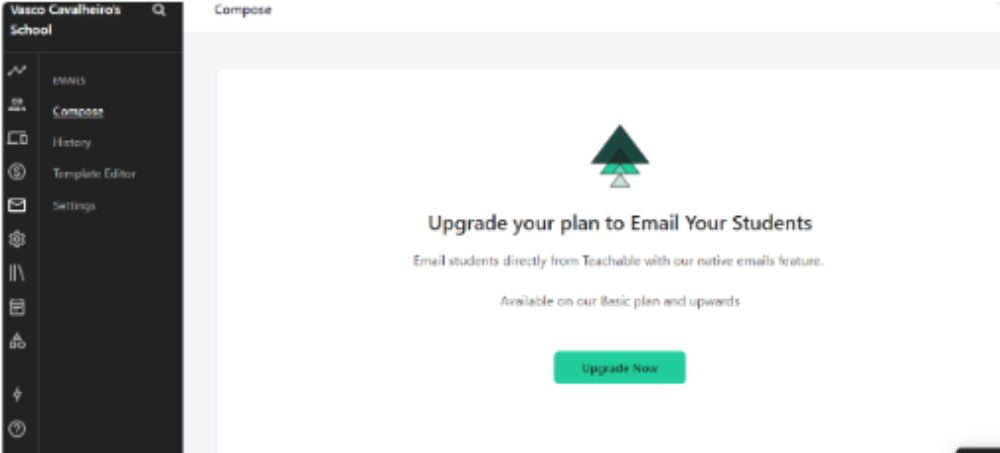
Teachable’s email marketing integrations, including MailChimp, ConvertKit, HubSpot, ActiveCampaign, and Drip, allow you to easily market your new offerings to your students with minimal effort.
Teachable provides course creators with the feature of sending emails directly from their dashboard.
MailChimp offers the capability to create automated emails triggered by actions such as course sign-ups or product purchases.
When using third-party apps such as MailChimp for email sending through Teachable, certain limitations may apply.
Access to data on student enrollment in individual courses, such as the number of enrolled students in your course, is not available.
It is not possible for MailChimp users send emails that automatically include student information such as names and email addresses.
The ability to send bulk emails directly from Teachable is convenient, as it eliminates the need for external email tools.
Zapier Integration
Different types of email you can send through Teachable
Teachable offers a variety of email marketing tools that can assist in engaging current students, advertising online courses, and increasing sales, even during busy periods.
An examination of the various email options available on the Teachable platform and their potential impact on sales.
Course Launch Email
To inform students of new updates and upgraded features, consider sending a Course Launch Email when introducing a new course.
Sending an email broadcast from within your Teachable school can be an effective way of launching your course and executing an email marketing campaign, especially if you have prior experience with MailChimp or other marketing platforms.
Abandoned Cart Emails
Abandoned cart emails are utilized as a means of reaching out customers who have added items into their shopping cart but have not made a purchase. This strategy is known for its success in salvaging sales that would have otherwise been lost.
Abandoned cart emails can account for up to 25% of revenue generated through email marketing. They offer a high level of personalization based on the visitor’s browsing behavior, allowing for tailored content like product recommendations and relevant information.
The purpose of these emails is to serve as reminders for users about the items they’ve added to their cart, with the aim of encouraging them to complete their checkouts.
Emails sent to individuals who have left items in their online shopping cart can have high open rates, as they are targeting those who have previously shown interest in purchasing a product but have not yet completed the transaction.
Retargeting ads are a highly effective marketing method in ecommerce that can aid in recovering a significant portion of lost revenue.
If a user does not purchase a plan after a free trial, an abandoned cart email can be used to remind them to upgrade.
To configure email notifications for abandoned carts, access the Settings > Email Notifications section in your dashboard, where you can craft a customized message to encourage customers to complete their purchase. Teachable offers a placeholder for the order link, simplifying the process for customers.
This article will explore the various types of emails available on the Teachable platform and their potential benefits for boosting sales.
Receipt and Confirmation Emails
It is essential to notify customers that their purchase has been successfully processed.
These emails are sent to all customers as a record of their purchase, including a receipt and confirmation.
Receipts contain access links to course content, ensuring convenient access to course material for students.
Order Confirmation Emails
The Order Confirmation Email is a standard feature for anyone who buys your course. Customization is possible through the General Settings > Email Templates section of your school dashboard, specifically by editing the “Order Confirmation” content block.
Teachable Integrated Payment Processing Features
Teachable’s payment processing feature enables users to accept student payments, including one-time or recurring payments, without the need for a third-party processor.
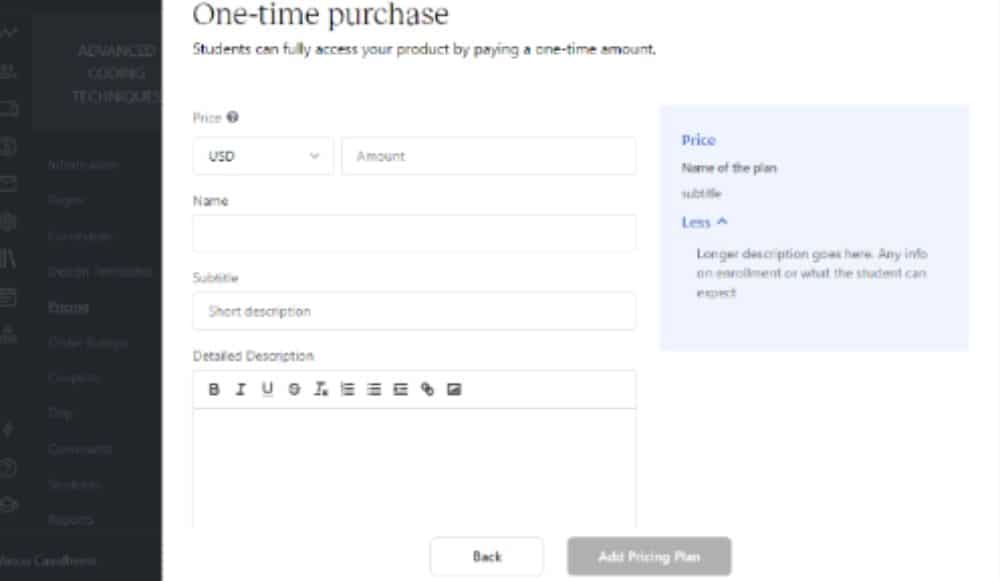
Upsells
Offer additional courses related to a student’s previous purchases to generate additional revenue following the initial purchase.
Our checkout process includes one-click upsells that can be added to a student’s purchase without the need to re-enter payment details.
Integrated shopping cart
The checkout process allows for the purchase of multiple courses at once, with options for discounts or free courses to boost sales. Different payment plans and coupon options are available through the integrated shopping cart. This allows for easy testing of pricing strategies.
Course price (paid or free)
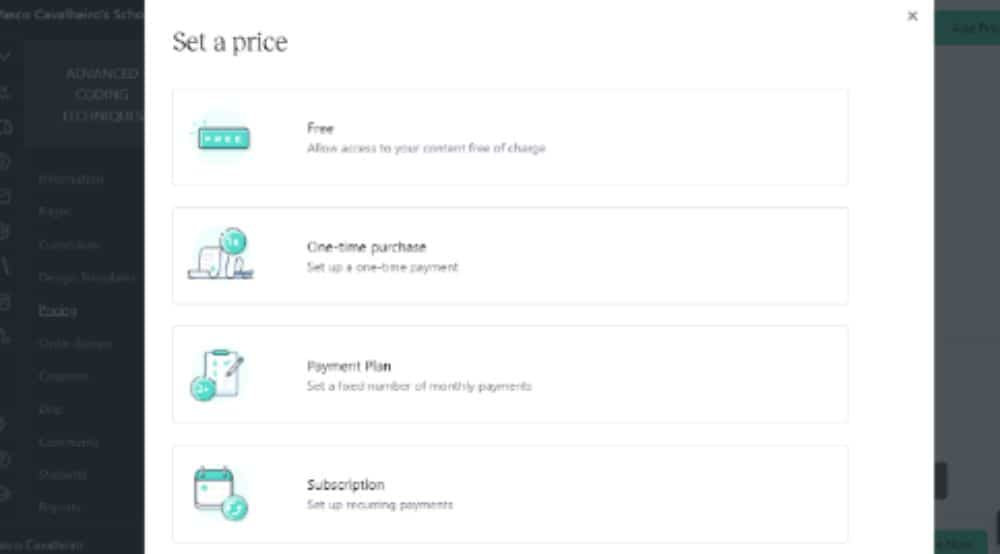
Discount coupons
The coupon codes feature on Teachable allows users to generate coupons for their courses and set a fixed price or discount for each code.
It is possible to generate coupon codes for your students, which will allow them to enroll in your course at a reduced cost or at no cost at all.
Utilizing coupon codes can be an effective method for promoting courses through affiliates or offering exclusive discounts. Once a coupon code is generated, it is possible to track the number of redemptions and expiration dates.
Teachable does not charge transaction or payment gateway fees for course sales on its platform for pro and business plans, making it a significant benefit.
When using a self-hosted elearning solution, like WordPress and a membership plugin, it’s common to have to pay extra fees for every course sale. In comparison to Teachable, which doesn’t include these fees, other elearning platforms can be more costly overall.
Course promotion through affiliates
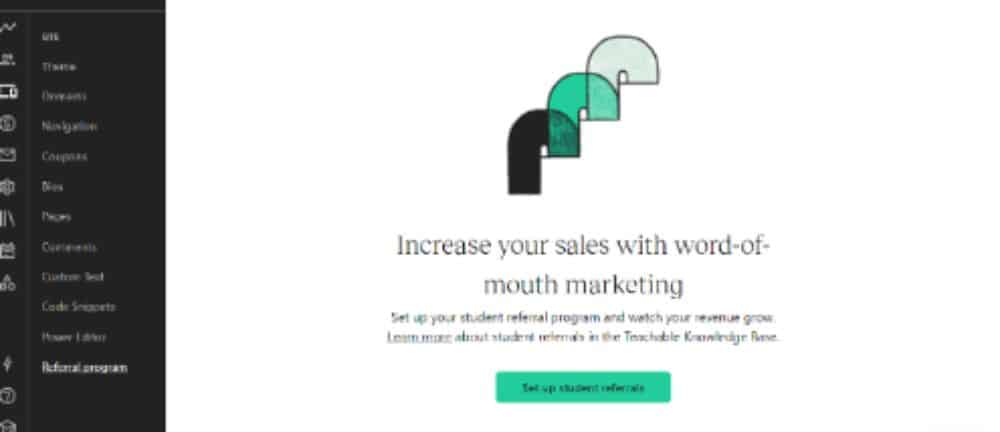
One option is to establish an affiliate program to allow affiliates to promote your course on their own platforms.
This feature enables individuals to advertise your course and receive a percentage of the earnings when someone registers using their referral link.
Sales & Marketing Features: The Bottom Line
Teachable offers unique features such as customizable sales pages and opt-in forms that differentiate it from competitors. It’s a great option for setting up free trials and offering discounts at checkout.
There are challenges in distinguishing between customers who purchase varying products and/or pricing levels.
Teachable has received positive feedback for its marketing, sales, and distribution features, which allow users to easily share their courses with interested individuals.
These are the areas where Teachable shines.
Teachable has a marketing tool that lets you sell your course on your website with a buy button. You can customize the button and link it to a sales or checkout page. If you use WordPress, you can use LearnDash or WP Courseware instead of the built-in tool. But if you do, learners will have to log in separately. If you use a different platform, those plugins won’t be an option.
Teachable provides a range of customization options and third-party integrations to facilitate easy e-learning implementation. Additionally, their community of course creators offers mutual advice and support to aid in the growth of online education businesses.
Teachable provides a cost-effective and straightforward solution for selling online courses without the need for an extravagant website.
Teachable Customer Support
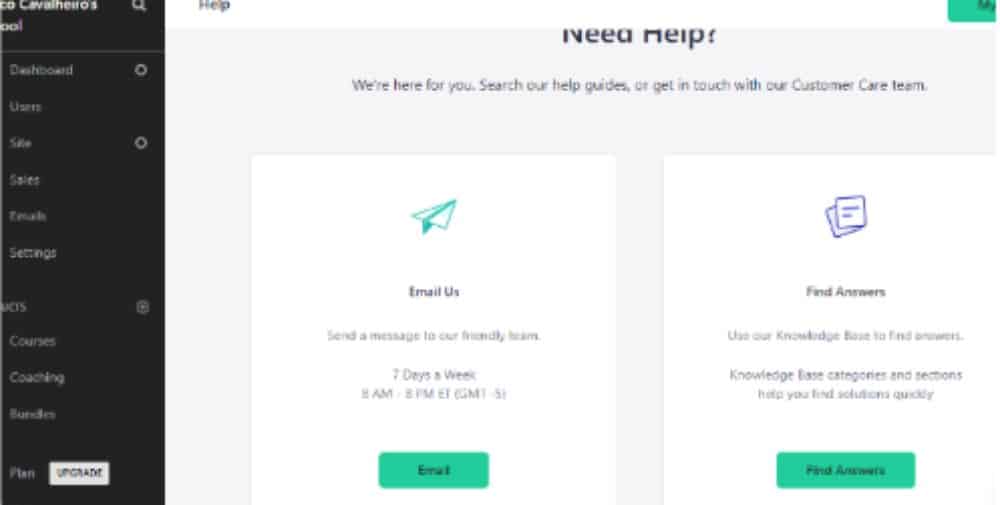
Support is accessible through live chat and email around the clock, every day of the week.
The support system at Teachable is strong. You can contact their support through email or live chat, but only pro and business users have access to live support. They also have a large knowledge base and an active community of users that you can benefit from.
If necessary, you can consider hiring someone who can assist you in setting up your website or completing tasks, such as building your course.
Teachable provides comprehensive online resources for self-help and offers 24/7 email support with a response time of one business day.
Course compliance, security and privacy controls
Teachable’s compliance features can be utilized to meet education-related laws at the international, national, and state levels.
The Compliance feature can be used to add pop-up disclaimers to sales pages for courses that will be sold or distributed in countries that require disclosure of certain information.
Advanced Reports
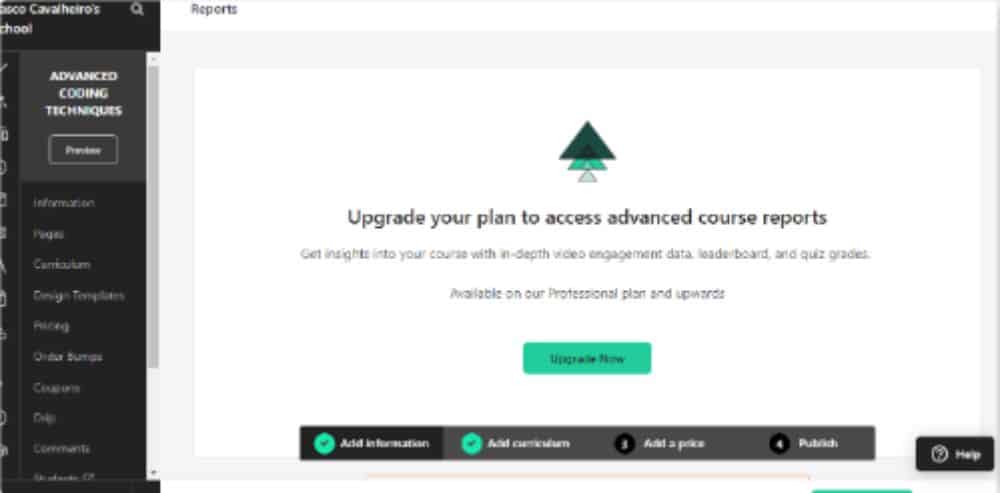
Teachable Pricing Plans and Features
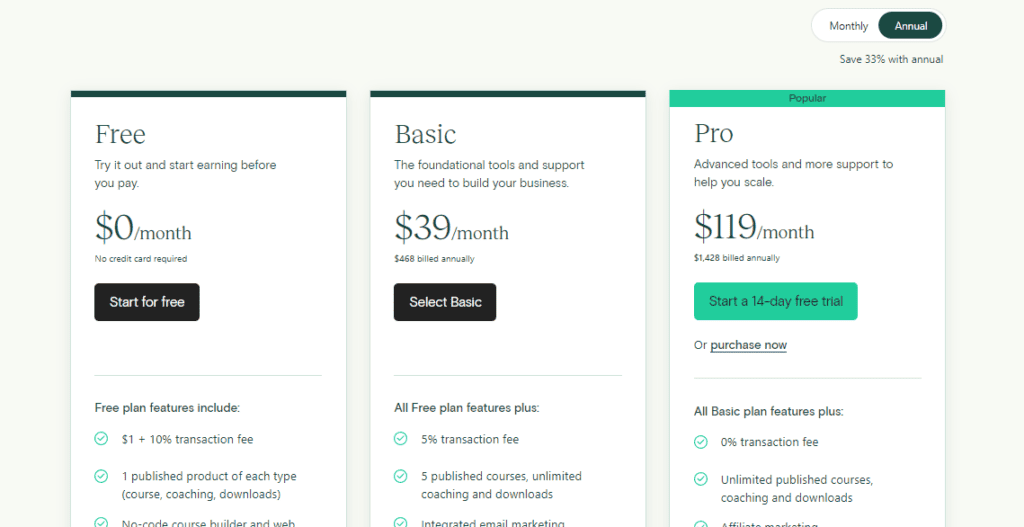
Teachable has 4 pricing options, including a free option and paid options ranging from $39 to $499 per month. The pricing depends on the features you require, but all plans allow you to create a customized school with your branding and content ownership. Each tier offers access to course building and marketing tools to help you create the best course possible.
The Basic plan is designed for those new to online course sales and offers a variety of features such as custom page creation, hosting on Teachable’s domain, and up to 10 team members. This plan provides flexibility and customization at a budget-friendly price.
The Pro plan offers additional benefits such as a free Teachable subdomain, unlimited students, custom certificates and quizzes, and advanced analytics on sales. This plan may be suitable for those seeking more features to expand their business.
The Business plan offers additional features including bulk student enrollment, marketing automation integrations, and custom contracts for affiliates or resellers to sell your course.
Free plan
Teachable’s free option includes unlimited course and video uploads, coaching sessions, student creation, video hosting, quizzes, surveys, and basic reporting tools.
Please note that the platform has a 10% transaction fee for each student course purchase, and there is only one admin available.
Teachable offers a free option for creating a school, but for those who wish to charge for their courses, it is recommended to choose a paid plan.
The free plan has a restricted range of features and offerings.
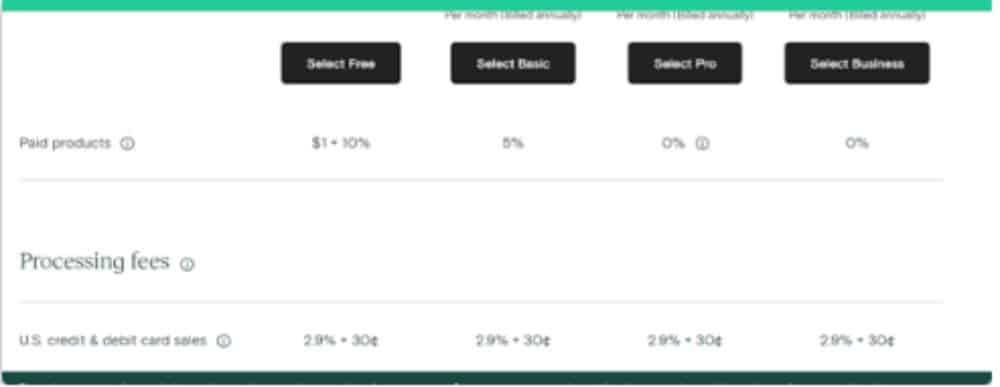
The Basic Plan
The Basic plan for Teachable costs $39 per month and provides access to all basic features, including the ability to upload unlimited courses with unlimited students. Users of the Basic plan do not incur transaction fees and can have up to two admins.
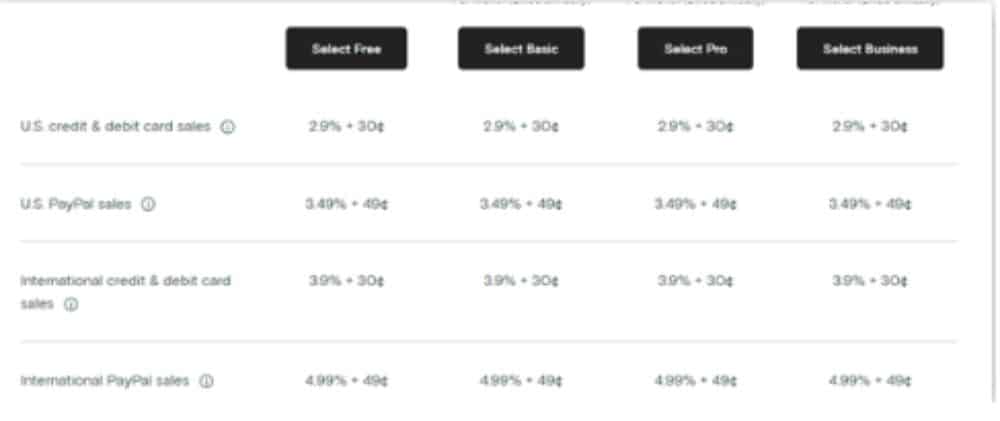
The Pro Plan
The Pro plan, which costs $119/month, includes all features of the Basic plan, as well as advanced student analytics, third-party integrations like Zapier, and marketing automation software such as Drip or MailChimp. Pro plan users receive priority support from Teachable’s customer service team, three admins for their accounts, unlimited video hosting, and the option to add a custom domain and SSL security certificate to their school.
The Pro plan provides access to unlimited courses and students, as well as the ability to sell memberships to paid content sites with recurring billing. Additionally, an affiliate marketing program can be added to your school.
These are some strategies for monetizing an online school: charging for specific course content, offering private courses, providing coupons and discounts to encourage enrollment, and selling school or course-related merchandise in a store feature.
The Business Plan
The Business plan costs $499 per month. It offers bulk student enrollment for easy course invitations. It also includes course compliance for added security when selling certified content. There are two Business plan options: $499/mo and $665/mo. With the $499/mo option, you can offer course coupons. With the $665/mo option, you can host multiple schools under one account
The 4 plans and Feature Usage
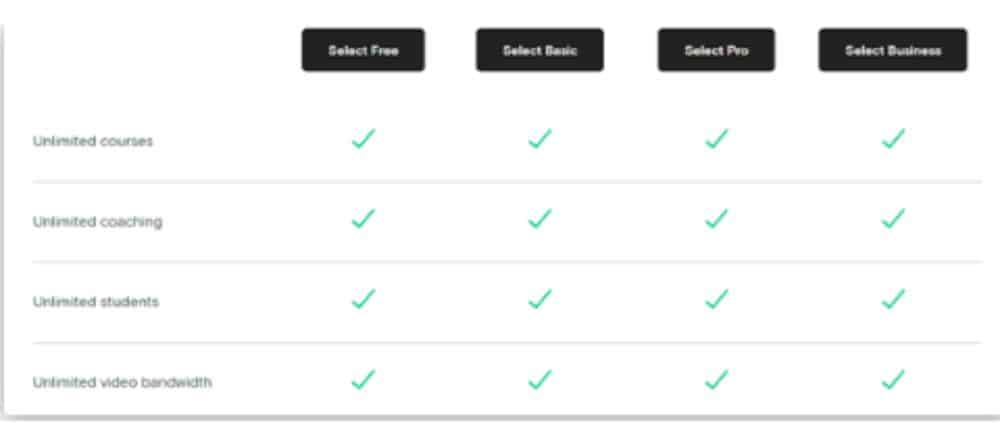
Support
Email support is accessible for all members regardless of their subscription plan, while live chat support is exclusively available to Pro and business plan users.
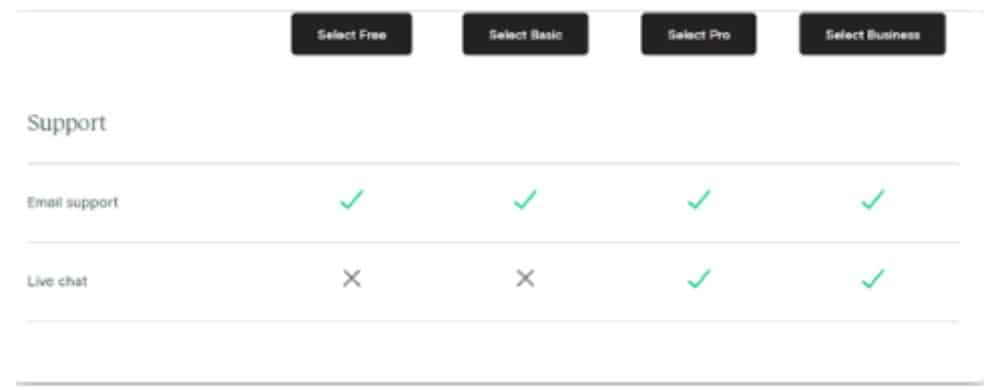
Features
Different plans offer varying numbers of admin-level users: free users have 1, basic plan has 2, pro plan has 5, and business plan can have up to 20.

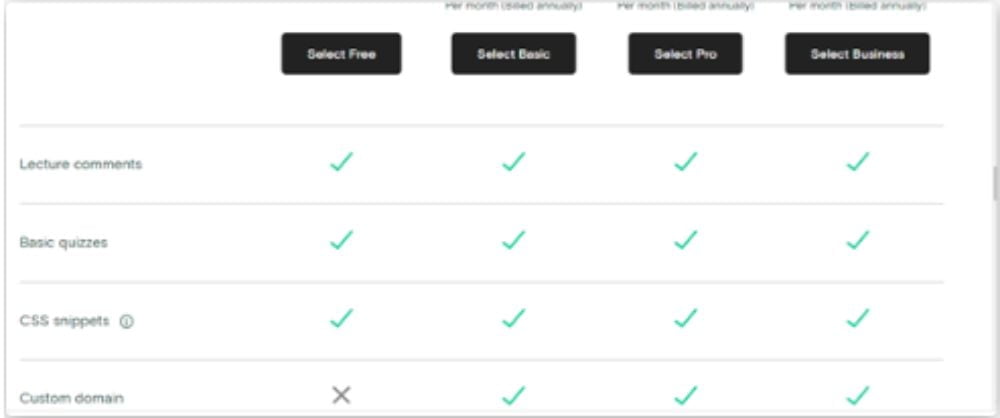
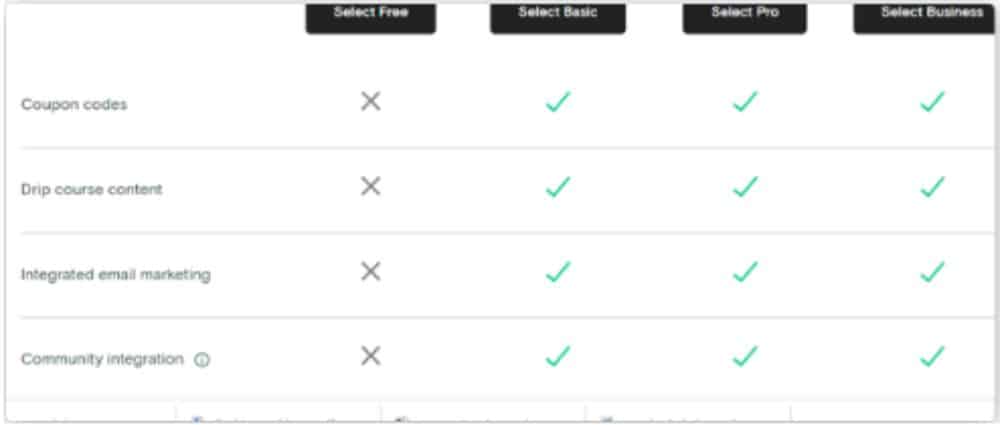

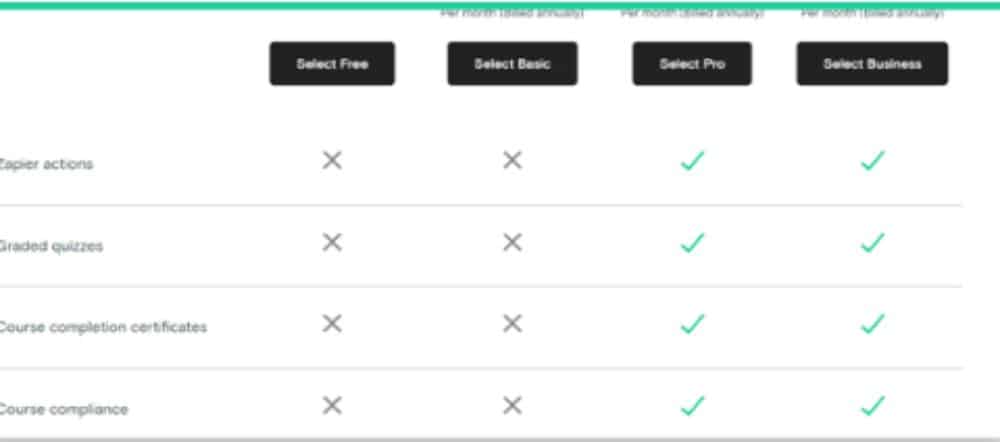

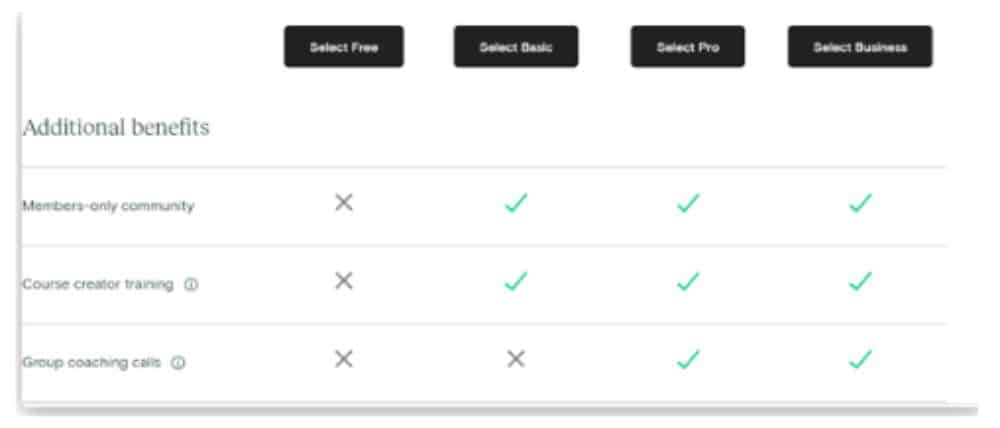
How Does Teachable Compare To Other Platforms?
Teachable is a user-friendly platform designed with beginners in mind. It provides step-by-step instructions to assist users in setting up their courses.
Teachable’s interface is intuitive, making it easy for beginners without experience in building websites to navigate without the need for a tutorial.
Advanced users can customize their site’s branding and appearance.
The available features are diverse, encompassing a broad range.
Multiple instructor accounts – Grant access to other educators or assistants to assist with the management of your school and its content.
Security – Teachable ensures secure payment processing with encryption and meets PCI compliance standards for credit card data security.
Hosted course pages –When using the teachable platform for online schooling, a subdomain with the format “myschool.teachable.com” is automatically created, but it is also possible to use a custom domain name such as “myschool.com”.
Unlimited video streaming – There are no additional costs for bandwidth usage when uploading video content.
Unlimited courses –There is no limit to the number of courses that can be created and sold.
Student management –Use the platform to group your students, track their progress in the course, and save their data for future reference.
Teachable-powered website – Our website allows for easy creation of a customized, single-page website for schools. Features include URL customization, theme selection, and device adaptation. Integration is also possible through our API.
Course creation & management – Users have the ability to select from a diverse range of multimedia lesson options, which include video, audio, text, presentations, and downloads. They can also arrange the lessons into sections and add them to a course, before choosing to publish the courses immediately or save them as drafts.
Live classes –The online whiteboard feature is available on Professional plans and allows for live teaching sessions and presentation sharing during video conferencing with students.
Student analytics – The ability to track individual student progress is a feature exclusive to Professional plans, which includes data on lesson time and quiz completion.
Teachable Review (In-Depth): Final Verdict
After examining all of the platform’s features in this Teachable review, it can be determined that it is a good and user-friendly option.
Teachable is effective in creating and delivering courses. Its course builder is user-friendly, the course player is well-designed, and it offers engagement tools including quizzes, certificates, dripping, compliance, and more.
The platform provides course selling tools such as a sales page builder, payment processing, checkout pages, 1-click upsells, and affiliate marketing.
Teachable may be a suitable choice for those who want to develop and promote online courses, and if it aligns with your needs, it may be worth considering.
Frequently Asked Questions
This section includes commonly asked questions about Teachable, beginning with comparisons to its competitors.
Teachable is a platform that offers the creation and sale of online courses. It operates in a highly competitive market with many similar platforms. A comparison of Teachable and its competitors is presented below.
Teachable Vs Kajabi
Kajabi is an all-in-one learning solution that provides a range of features to help launch your online course. It is a premium option, designed for entrepreneurs and course creators who wish to manage their entire business from a single platform.
The Kajabi interface bears a resemblance to Teachable, with a focus on drag-and-drop design components that facilitate rapid site creation. Kajabi’s email marketing software is a significant advantage, simplifying audience capture from the outset.
There are some differences between Kajabi and Teachable. Kajabi charges more and offers less customization options for site design. In addition, content delivery must go through Kajabi, and if you want to use Facebook or Google ads to drive traffic, an additional service fee applies.
Teachable offers a WordPress plugin for customization and allows users to maintain control over their branding. The free plan includes hosting for up to three courses without requiring a credit card. For those looking to test the waters before committing, Teachable is a viable option.
Teachable Vs Thinkific
Thinkific and Teachable have similar pricing structures, but Thinkific has some limitations and also offers advanced features such as drip content and course bundles for upselling as part of its all-in-one online course platform.
Thinkific and Teachable have different approaches to hosting content.
Thinkific allows for direct video file uploads to your website, while Teachable uses YouTube or Vimeo. This means that Thinkific allows for offline access to lessons, which may be a consideration depending on internet availability for students. Ultimately, the decision of which platform to use depends on individual needs and preferences.
Both platforms offer reliable customer support through email and phone, with assistance available at all times.
Teachable is a course platform known for its user-friendliness, designed to allow for a quick and easy start without the need for extensive learning. The platform’s focus on ease of use typically allows most users to create their first course in under an hour.
Teachable provides a no-cost plan that enables you to market an unrestricted amount of courses without any initial expenses. This makes it an attractive choice for those looking to commence with limited financial investment.
Thinkific has a slight learning curve, particularly for those who are inexperienced in developing online courses or constructing their website. Nevertheless, once you become familiar with it, Thinkific provides a significant amount of strength and versatility that is difficult to match.
Teachable is a viable option for those seeking a low-cost, user-friendly platform.
Teachable vs Podia
Teachable and Podia share similarities, but Teachable offers a wider range of features. These include organizing courses into sections, lectures, and quizzes, custom branding, an affiliate program, and coupon codes for customers.
Teachable and Podia have notable features, but Teachable’s free version (albeit with limited features) sets it apart from Podia, making it a suitable choice for those who are starting out and cannot afford paid software.
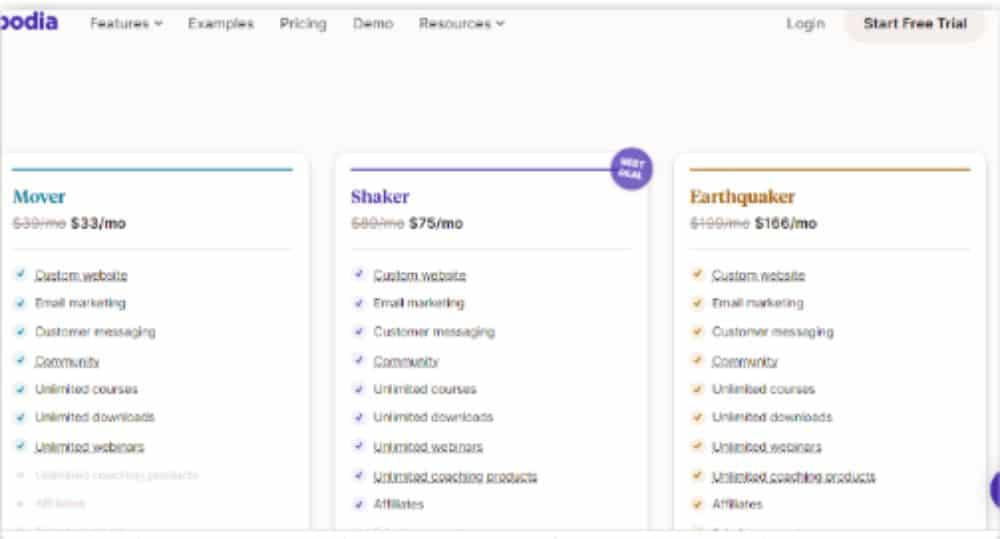
When seeking rapid business growth, Teachable’s free version may not suffice, necessitating an immediate upgrade. While Teachable is exclusively dedicated to creating and selling online courses, Podia offers additional services like digital downloads and memberships.
Podia does not offer the possibility of utilizing a subdomain from the platform’s primary domain. It is necessary to acquire your own domain name and configure it with Podia. Compared to Teachable, it provides less customization options and the inability to establish a coupon code or affiliate program for your course.
Podia includes email marketing services in their membership plan, while Teachable offers it as an add-on to their basic plans. This feature can be beneficial for those who plan on selling products in addition to online courses, such as ebooks or webinars.
Teachable Vs Udemy
Udemy and Teachable are online platforms for selling courses. Udemy is a marketplace that offers pre-made curriculum and hosts courses on its own platform, while Teachable provides instructors with tools to create their own content. Udemy is currently more popular than Teachable.
When using Udemy as an instructor, revenue is shared with the site and your content is not hosted directly on the site. Uploaded videos are allowed, but access to student lists and data is not provided.
The lack of access to certain features, such as email marketing, on this platform may pose challenges in marketing your course.
Udemy has a fixed pricing policy for courses. Discounts can be offered, but the platform retains a percentage of all course sales, with the remaining amount disbursed monthly to the course creator.
Teachable’s platform is designed for course hosting and offers various features such as customized domain names, unlimited courses and students, and the ability to sell subscriptions and bundles. The company also facilitates a community for its users to connect with other teachers for support and advice.
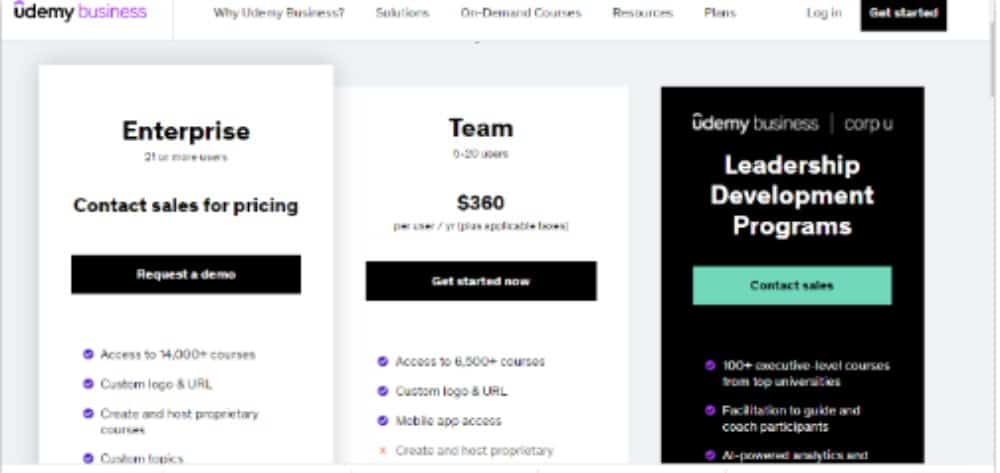
Teachable vs Competitors Bottom-line
Using an all-in-one, hosted platform such as Udemy, Teachable, Kajabi, or Thinkific can simplify the process of creating and selling online courses, as it eliminates the need to deal with servers, web hosting, or email marketing.
When choosing a platform for creating an online course, it’s important to weigh the advantages of ease of use versus the benefits of features and flexibility. For beginners, simpler platforms may be a better option. However, if you have long-term business goals for your course, it may be worth considering a more flexible platform such as Teachable.
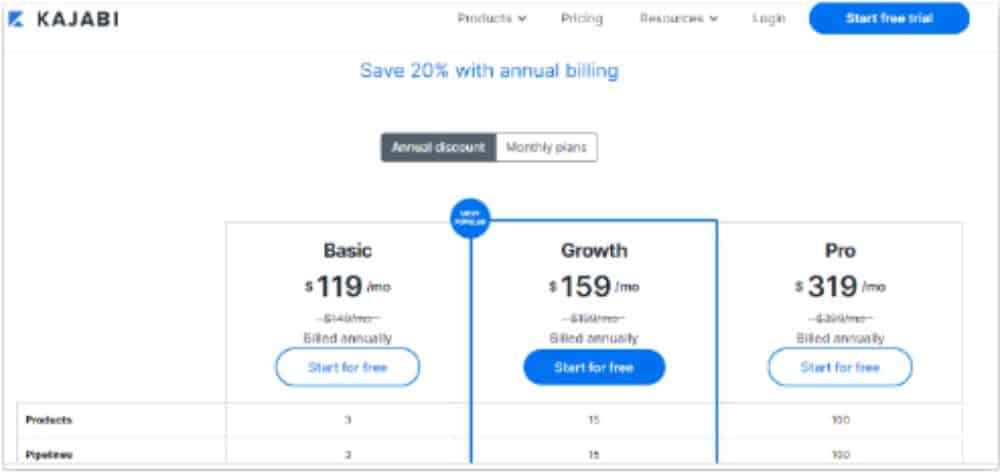
Teachable offers more flexible pricing plans than Kajabi and Thinkific, with slightly lower costs than both competitors. Kajabi’s basic plan costs $119 per month with a 14-day free trial, while their growth plan is $159 and the pro plan is $319. Teachable’s basic plan starts at $36 per month and includes a free option.
Thinkific provides four pricing options for their platform. Their Free plan has no cost, while the Basic plan has a monthly fee of $36. The Pro plan offers additional features such as the ability to add team members and offer course coupons for $74 per month. Finally, their Grow plan is available for a monthly cost of $149.
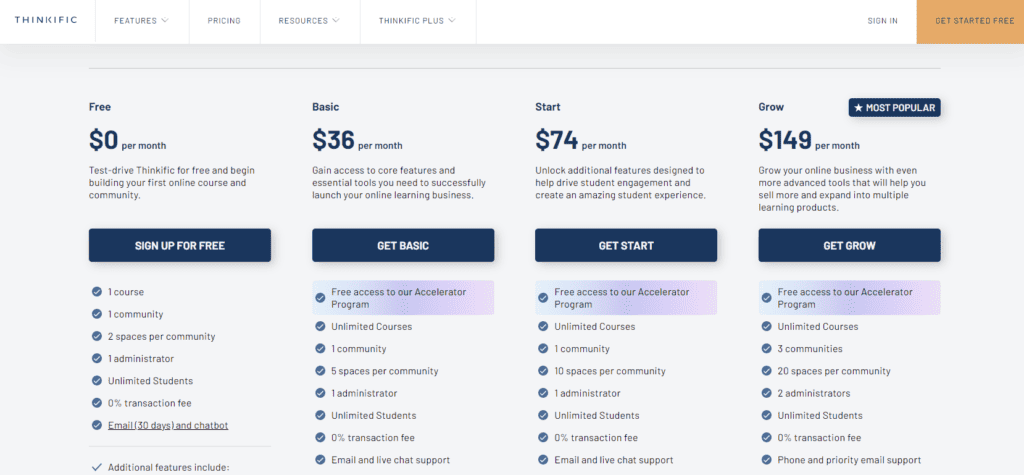
Teachable provides four distinct pricing plans including the free option, Basic plan at $39 per month, Professional plan at $119 per month, and Business plan at $499 per month. Each plan offers unlimited courses, hosting for unlimited students, customizable branding, along with access to features such as a course completion certificate and student discussions.
The payment processing fees are the main difference between the three plans. Basic users pay 5% plus 30 cents per transaction. Professional users pay 10% plus 30 cents per transaction. Business users don’t pay transaction fees on top of their monthly subscription fees. This makes Teachable’s Business plan the most affordable option in the long run.
In the case that one is still on a limited budget, what options are available?
What are the necessary steps to create a website, develop courses, sell products, and access important features?
I empathize with this situation as I have personally experienced it. As a course creator, I am familiar with the process of building an audience from the ground up.
I founded OnlineCourseHost.com as an online course platform that offers similar features to Kajabi at a lower cost.
OnlineCourseHost.com was created by our team to provide course creators with a user-friendly online course platform that includes built-in email marketing capabilities, such as bulk email.
Our goal is to provide you with all the necessary information to ensure the success of your online course business, beyond just a platform.
The Course Creator Academy offers all the necessary resources for individuals to become successful online course creators, conveniently available in one location for free.




